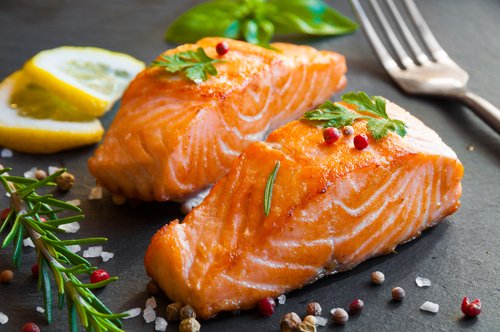Why the Ketogenic Diet Keeps Trending
The ketogenic diet isn’t just a passing fad—it has roots in clinical medicine. Physicians first used a high-fat, very low-carb protocol in the 1920s to help manage seizures, particularly in children. After drifting into the background with the rise of anti-seizure drugs, keto resurfaced in the 1990s and, by the mid-2000s, was widely accepted as an effective therapy for drug-resistant epilepsy. Today, searches for “keto diet for beginners” regularly outpace even “New Year’s resolutions,” fueled by reports of weight loss, steadier energy, and better metabolic markers. The catch is commitment: keto is one of the strictest popular eating patterns, and consistency matters—especially when holiday food pushes you off routine.
Keto 101: Carbs Down, Fats Up, Ketones On
Keto flips the usual macronutrient script. By restricting carbohydrates and keeping protein moderate, you push your body to burn fat for fuel. As glycogen stores dwindle, the liver produces small molecules called ketones, which your brain and muscles can use as an alternative energy source. To achieve and maintain ketosis, most people aim for about 20 grams of net carbs or less per day—net carbs meaning total carbohydrates minus fiber and certain sugar alcohols. This approach isn’t for everyone. People with diabetes, anyone who is pregnant or breastfeeding, and those on blood pressure medications should talk to a clinician before starting. Early side effects such as constipation, nausea, or diarrhea are common and usually short-lived, though some experts note a small risk of kidney or gallstones.
What to Eat on Keto—and What to Skip
A holiday-proof keto plate is built from whole, minimally processed foods. Eggs, seafood, and unprocessed meats provide protein; non-starchy vegetables like asparagus, zucchini, cauliflower, tomatoes, lettuce, eggplant, peppers, and Brussels sprouts add fiber and micronutrients; and fats such as olive oil, butter, and coconut oil help you meet your energy needs. Cheese and full-fat dairy can fit for many people as well. On the flip side, most grains, breads, pastas, rice, potatoes, fruit juices, sodas, sweets, and many alcoholic drinks will spike carbs quickly. Be cautious with “keto” packaged snacks—long ingredient lists and hidden starches can nudge you out of ketosis just as easily as conventional treats.
Proven Keto Benefits You Can Lean On
Dozens of randomized controlled trials have found that low-carb diets can outperform low-fat approaches for weight loss, particularly in people with overweight or obesity. Many also report steadier energy and improved blood sugar control, which can sharpen focus. Because keto emphasizes whole foods, you’ll naturally take in meaningful amounts of vitamins C and K from leafy greens, plus minerals like iron and calcium, while quality meats and dairy deliver complete proteins. Most importantly for long-term health, keto eating pairs perfectly with fatty fish—one of the richest sources of the omega-3s linked to heart, brain, and eye support.
Keto and Omega-3s: Why EPA and DHA Deserve the Spotlight
ALA vs. EPA and DHA—what really moves the needle
Not all omega-3s act the same in the body. Plant foods such as flax, chia, and walnuts provide ALA (alpha-linolenic acid), a short-chain omega-3 your body can convert into EPA and DHA. That conversion, however, is notoriously inefficient—typically well under 5%. Put simply, 1,000 mg of ALA might yield only about 50 mg of EPA plus DHA. Most experts suggest aiming for roughly 500–1,000 mg of EPA+DHA per day to capture their best-documented benefits. That’s why keto eaters do well to focus on preformed EPA and DHA from marine sources, while still enjoying plant foods for their own merits.
The best keto-friendly omega-3 sources
Fatty fish are tailor-made for a ketogenic menu. Salmon, mackerel, herring, sardines, lake trout, and albacore tuna are naturally low in carbs and rich in EPA and DHA. A standard cooked serving of salmon (about 3.5 ounces) often delivers 1,000–2,000 mg of combined EPA+DHA—enough to cover a full day’s target in one meal. The American Heart Association recommends eating fish, especially oily varieties, at least twice per week. That rhythm fits easily within keto and helps keep your omega-3 status in a healthy range through the festive season.
Holiday Survival on Keto: Practical Ways to Stay in Ketosis
Success during the holidays comes from planning rather than perfection. Center meals around protein and non-starchy vegetables, and let fatty fish, eggs, and olive-oil-based dishes do the heavy lifting. Watch for hidden sugars in sauces, glazes, and dressings. Hydrate well and keep electrolytes in balance when carbs are low. If you do indulge, reset with your next meal rather than waiting for the calendar to change; ketosis is a metabolic state you can regain with a few disciplined days.
Safety First: Know When to Personalize
Keto can be a powerful tool, but it isn’t universal. If you’re managing a medical condition, taking prescription medications, or noticing persistent side effects, align your plan with a healthcare professional. You can also personalize beyond macros by paying attention to omega-3 intake; building fish into your weekly routine or choosing a quality fish-oil or algal-oil supplement can help bridge gaps when holiday menus get unpredictable.
The Bottom Line
A well-crafted ketogenic diet doesn’t just help you navigate holiday buffets—it can also boost your intake of heart- and brain-friendly omega-3s. Keep net carbs low, prioritize whole foods, and make fatty fish a regular headliner. With that simple playbook, you’ll maintain ketosis, stay on track with your health goals, and give your body the EPA and DHA it thrives on—all season long.




